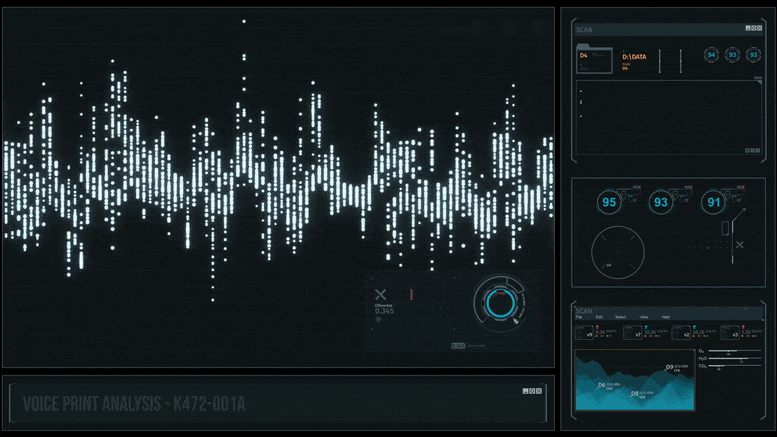Detection of COVID-19 via Automatic Artificial Intelligence Cough Analysis
0 View
Share this Video
- Publish Date:
- 12 July, 2021
- Category:
- Covid
- Video License
- Standard License
- Imported From:
- Youtube
Tags

A team of researchers submitted the system to the Cough Sound Track of the Diagnosing COVID-19 using Acoustics (DiCOVA) Challenge.
The covid-19 crisis has put health systems around the world to the test. Access to vaccines against covid-19 has made the situation more stable by the day. However, we must and will continue with the mass population screening to detect positive cases and thus break possible virus transmission chains. Therefore, we need to explore new techniques to reduce the time and cost of diagnostic tests to perform them on a large scale in an accessible, efficient and economical way.
As part of the international conference Interspeech 2021, a team of researchers submitted the system to the Cough Sound Track of the Diagnosing COVID-19 using Acoustics (DiCOVA) Challenge. The article related to their contribution has been accepted to participate in the Interspeech scientific program.
This research is led by Adrià Mallol, alumni of UPF audiovisual systems engineering and researcher at the University of Augsburg (Germany), and Helena Cuesta, with the participation of Emilia Gómez (Joint Research Centre, European Commission), both members of the Music Technology study group (MTG) from the UPF Department of Information and Communication Technologies (DTIC), and Björn Schuller, a researcher at the University of Augsburg and Imperial College London (UK).
“We have challenged ourselves to explore how we can use artificial intelligence techniques to detect the disease.”
Previous AI-based systems have proven effective in detecting coughs and sneezes and in recognizing respiratory abnormalities. AI has also been used in the field of mental health to identify patients with depression or PTSD. Following the advances in digital health: “Inspired by these studies and based on the respiratory diseases caused by Covid-19, we have taken on the challenge of investigating whether AI techniques can detect diseases related to the virus through automatic cough analysis”, explains Helena Cuesta. , member of the research team.
Cough signal is changed in patients who test positive for covid-19
In this paper, the authors examine two different neural network architectures, but with a common structure: a first block that processes the input spectrograms and extracts a set of embedded features, and a second block that classifies these features based on whether they match a patient who is positive. test for covid-19 or a healthy patient.
“Our models use the spectrogram, a time-frequency representation of the audio signal, as input.”
The first step is to preprocess the input data. In general, the database recordings contain several coughing fits separated by silences (the typical pattern when we cough). “To preserve only the parts of the recording that contain relevant information, such as coughing, we use a sound activity detector (SAD) based on the energy of the signal,” Cuesta explains. After filtering this data, the next step is to extract the attributes and then segment them. “Our models use the spectrogram, a time-frequency representation of the audio signal, as input.” First we calculate the spectrogram of each recording from the database and then segment it into fragments of one second each,” she adds.
The gender of the patient matters
An interesting contribution of the project is the study of different versions of neural networks to investigate whether the gender of the patient is a factor taken into account when analyzing the cough. “Intuitively, when we approached this work, one of our hypotheses was that coughing in men and women should have different characteristics because their vocal tracts differ in size and shape,” the authors note.
Coughs caused by a man and a woman are not necessarily equivalent from the spectrogram point of view
From the experiments conducted for their work, one of the most remarkable aspects is that the models containing information about the patient’s sex (sex-based, gender-specific) achieve better results in their predictions in most of the scenarios assessed by the authors. , confirming the hypothesis that cough generated by a man and that caused by a woman are not necessarily equivalent from the spectrogram point of view.
Cough Sound Track – DiCOVA Challenge
The organization of the DiCOVA Challenge provides participants with a database (Coswara dataset) with 1,040 audio recordings of people coughing between 1 and 15 seconds. Together with the recordings, this database provides a set of metadata associated with each recording: positive/negative for covid-19, the gender and nationality of the individual. “Based on this data, we developed and evaluated two different neural networks that, using one second of audio, predict positive or negative Covid-19,” the authors point out.
While this work is only a first approach to detecting Covid-19 through automated cough analysis, the experiments presented by the authors provide some pointers to follow in the next steps of this study. It remains to be understood how the cough signal is altered in Covid-19 positive patients. For example, functions can be extracted and specific neural networks designed to improve the quality of the models.
Related work:
Adrià Mallol-Ragolta, Helena Cuesta, Emilia Gómez, and Björn Schuller (2021), “Cough-based COVID-19 Detection with Contextual Attention, Convolutional Neural Networks, and Gender Information”, Proceedings of Interspeech. Brno, (Czech Republic): ISCA, 2021, in print.
Funding: This project is funded by the EU’s Horizon 2020 research and innovation program through the projects sustAGE (ID 826506) and TROMPA (ID 770376), and by AGAUR, Catalan Government (ID 2018FI-B01015).










